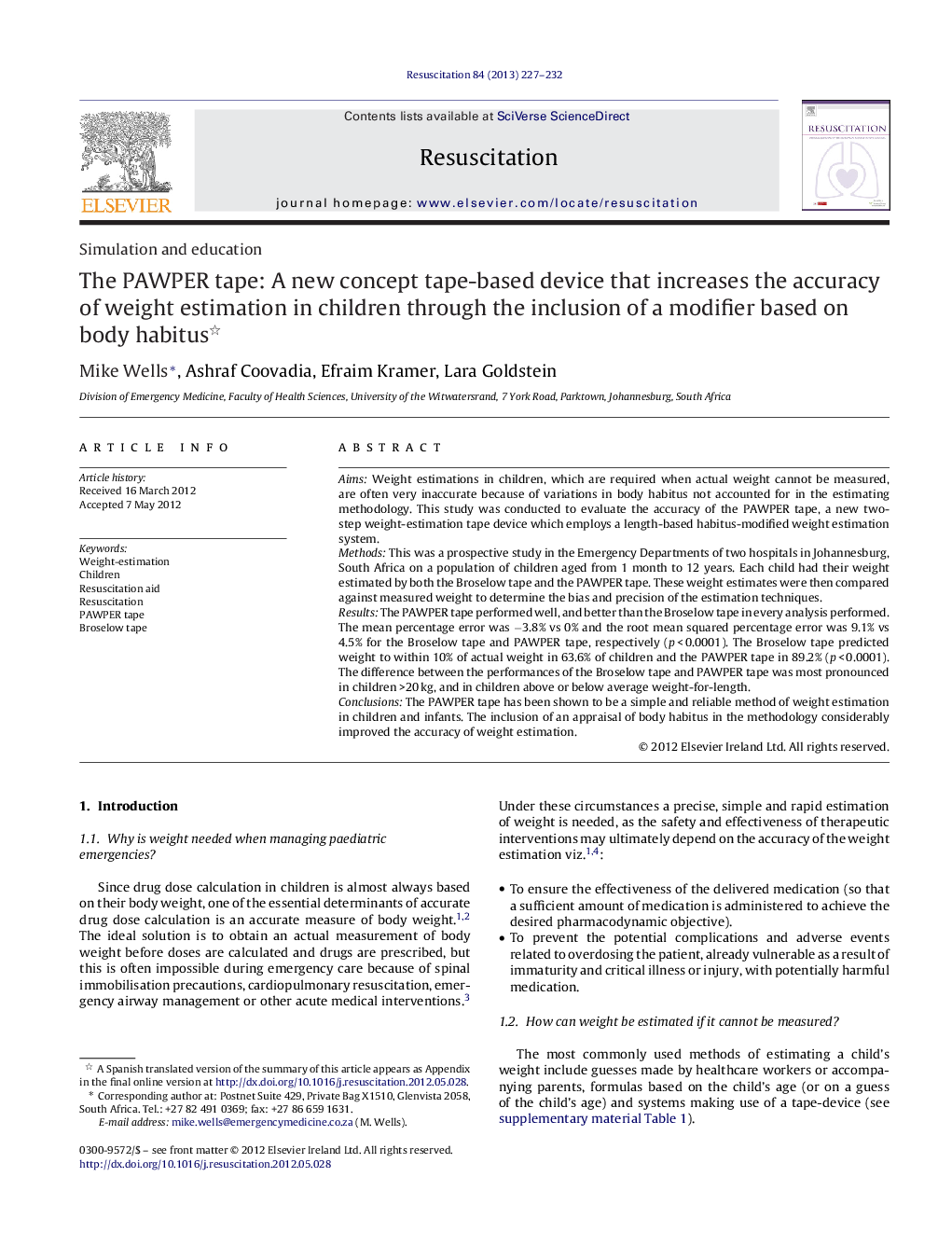| Article ID | Journal | Published Year | Pages | File Type |
|---|---|---|---|---|
| 3008332 | Resuscitation | 2013 | 6 Pages |
AimsWeight estimations in children, which are required when actual weight cannot be measured, are often very inaccurate because of variations in body habitus not accounted for in the estimating methodology. This study was conducted to evaluate the accuracy of the PAWPER tape, a new two-step weight-estimation tape device which employs a length-based habitus-modified weight estimation system.MethodsThis was a prospective study in the Emergency Departments of two hospitals in Johannesburg, South Africa on a population of children aged from 1 month to 12 years. Each child had their weight estimated by both the Broselow tape and the PAWPER tape. These weight estimates were then compared against measured weight to determine the bias and precision of the estimation techniques.ResultsThe PAWPER tape performed well, and better than the Broselow tape in every analysis performed. The mean percentage error was −3.8% vs 0% and the root mean squared percentage error was 9.1% vs 4.5% for the Broselow tape and PAWPER tape, respectively (p < 0.0001). The Broselow tape predicted weight to within 10% of actual weight in 63.6% of children and the PAWPER tape in 89.2% (p < 0.0001). The difference between the performances of the Broselow tape and PAWPER tape was most pronounced in children >20 kg, and in children above or below average weight-for-length.ConclusionsThe PAWPER tape has been shown to be a simple and reliable method of weight estimation in children and infants. The inclusion of an appraisal of body habitus in the methodology considerably improved the accuracy of weight estimation.
